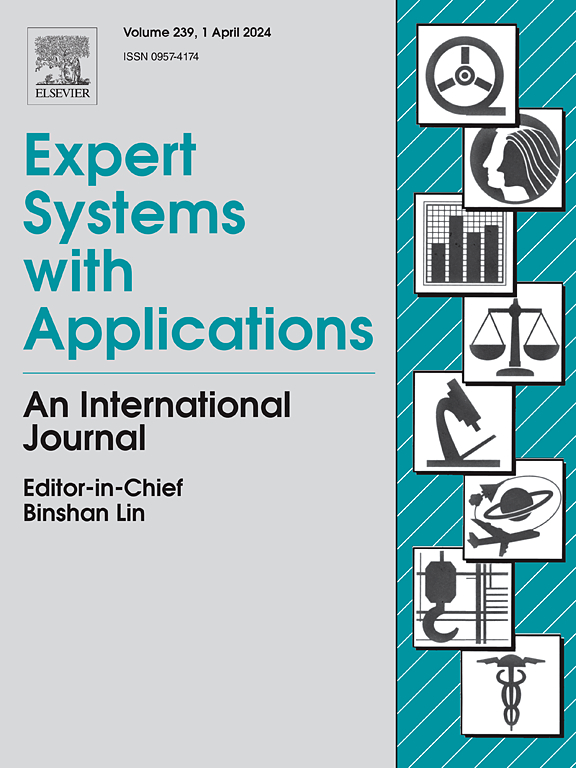A high-effective swarm intelligence-based multi-robot cooperation method for target searching in unknown hazardous environments
IF 7.5
1区 计算机科学
Q1 COMPUTER SCIENCE, ARTIFICIAL INTELLIGENCE
引用次数: 0
Abstract
To solve target searching problems for multi-robot cooperation with inaccurate target distance perception in unknown hazardous environments, a hybrid adaptive robotic particle swarm optimizer (RPSO) and grey wolf optimizer (GWO) based algorithm with continuous virtual target guidance is proposed for high effective path planning in the searching. In the initial searching stages, both the wolf behavior-generated position and the gbest position and the pbesti positions from RPSO are employed to guide the motions of robots. With the information provided by these initial robot movement paths, a geometric model is established to generate potential targets. The K-means cluster algorithm is introduced to estimate a virtual target position online from potential targets, with new robot-presenting route information to update the history path information. Then the virtual position is employed as one of the direction components to help the robots approach the actual target. In addition, to avoid mobile robots falling into local convergence, a heuristic moving direction determination scheme is utilized to make robots circumvent obstacles in swarm motions, as well as a mutual repulsion algorithm to keep them in a scattering state. Simulation experiments on different types of unknown environments with varied robot numbers and adaptability testing for a dynamic target are carried out to verify the feasibility of the proposed target searching method with comparisons to the other three famous target searching algorithms. It is verified from the results that the presented method can not only contribute a 100% success rate in all runs of searching for a stochastic dynamic target under a limited maximal velocity, but also produce both the shortest path length and minimum iterations in terms of statistical metrics over the comparative methods.
一种基于蜂群智能的高效多机器人合作方法,用于在未知危险环境中搜索目标
为了解决在未知危险环境中目标距离感知不准确的多机器人合作目标搜索问题,提出了一种基于自适应机器人粒子群优化器(RPSO)和灰狼优化器(GWO)的混合算法,该算法具有连续虚拟目标引导功能,可在搜索过程中实现高效路径规划。在初始搜索阶段,灰狼行为生成的位置和 RPSO 得出的 gbest 位置和 pbesti 位置都用于指导机器人的运动。利用这些初始机器人运动路径提供的信息,建立几何模型,生成潜在目标。引入 K-means 聚类算法,从潜在目标中在线估算出虚拟目标位置,并利用新的机器人运动路径信息更新历史路径信息。然后将虚拟位置作为方向分量之一,帮助机器人接近实际目标。此外,为避免移动机器人陷入局部收敛,还采用了启发式移动方向确定方案,使机器人在蜂群运动中绕过障碍物,并采用互斥算法使机器人处于散射状态。为了验证所提出的目标搜索方法的可行性,与其他三种著名的目标搜索算法进行了比较。结果证明,所提出的方法不仅在有限最大速度下搜索随机动态目标的所有运行中都能达到 100%的成功率,而且在统计指标上比比较方法的路径长度最短、迭代次数最少。
本文章由计算机程序翻译,如有差异,请以英文原文为准。
求助全文
约1分钟内获得全文
求助全文
来源期刊

Expert Systems with Applications
工程技术-工程:电子与电气
CiteScore
13.80
自引率
10.60%
发文量
2045
审稿时长
8.7 months
期刊介绍:
Expert Systems With Applications is an international journal dedicated to the exchange of information on expert and intelligent systems used globally in industry, government, and universities. The journal emphasizes original papers covering the design, development, testing, implementation, and management of these systems, offering practical guidelines. It spans various sectors such as finance, engineering, marketing, law, project management, information management, medicine, and more. The journal also welcomes papers on multi-agent systems, knowledge management, neural networks, knowledge discovery, data mining, and other related areas, excluding applications to military/defense systems.
 求助内容:
求助内容: 应助结果提醒方式:
应助结果提醒方式:


